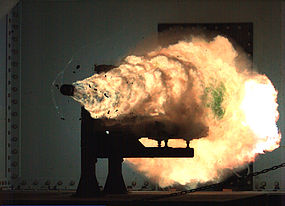HERE'S THE FIRST LOOK AT THE DDG-1000 ZUMWALT. It's a major part of the USN's answer to the Chinese navy's growth in Asian waters. It's a littoral vessel, designed for coastal patrols. Like everything these days, it's not cheap: according to the Washington Post/Associated Press, "Stealth destroyer, at over $3 billion apiece, is US Navy’s latest answer to rising China".
A super-stealthy warship that could underpin the U.S. navy’s China strategy will be able to sneak up on coastlines virtually undetected and pound targets with electromagnetic “railguns” right out of a sci-fi movie.
But at more than $3 billion a pop, critics say the new DDG-1000 destroyer sucks away funds that could be better used to bolster a thinly stretched conventional fleet. One outspoken admiral in China has scoffed that all it would take to sink the high-tech American ship is an armada of explosive-laden fishing boats.
But at more than $3 billion a pop, critics say the new DDG-1000 destroyer sucks away funds that could be better used to bolster a thinly stretched conventional fleet. One outspoken admiral in China has scoffed that all it would take to sink the high-tech American ship is an armada of explosive-laden fishing boats.
 |
| At 2.4 kilometres per second (5,400 mph), the air burns, no chemical propellant used. |
The DDG-1000 and other stealth destroyers of the Zumwalt class feature a wave-piercing hull that leaves almost no wake, electric drive propulsion and advanced sonar and missiles. They are longer and heavier than existing destroyers — but will have half the crew because of automated systems and appear to be little more than a small fishing boat on enemy radar.


